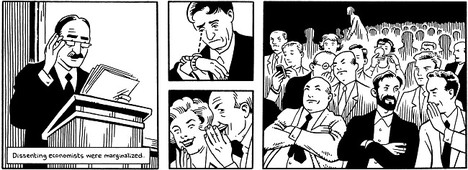(p. B6) Both Nissan and Mitsubishi have their own reasons for rushing out an all-electric car. Having invested little in hybrids, they hope to leapfrog straight to the next technology.
. . .
“You don’t see many competing technologies survive in a key market for very long,” said Mr. Shimizu, the Keio University professor.
And more often than not in the history of innovation, a change in the dominant technology means a change in the market leader.
“Electric cars are a disruptive technology, and Toyota knows that,” Mr. Shimizu said. “I wouldn’t say Toyota is killing the electric vehicle. Perhaps Toyota is scared.”
For the full story, see:
HIROKO TABUCHI. “The Electric Slide.” The New York Times (Thursday, August 20, 2009): B1 & B6.
(Note: The online version of the article had the title: “Toyota, Hybrid Innovator, Holds Back in Race to Go Electric.”)
(Note: ellipsis added.)



